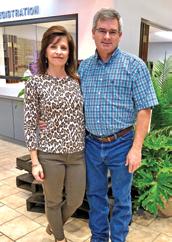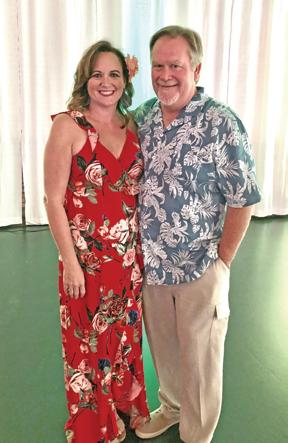
5 minute read
CHRISTUS GOLD RUSH
Gold Rush endows Mobile Mammography Bus
J o y c el y ne Fad oju t imi
Advertisement



jo y @ i p lusm ag.c om

Connie and Ricky Paul




Laney and Patricia Newman
Margie and Blake Tucker



Nat and Michelle Mann
Aliceson Howell, Nelda Strong and Carolyn Ann Walgren

Executive Director of Development, CHRISTUS Good Shepherd Health System Aliceson Howell and husband Corey Howell of Grady Crawford Construction Company Inc.

Delcine and Wade Johnson



Jared Graham, Jana and Todd Hancock
Nothing kills more people than heart disease. Still, it is far from the only mass murderer. One out of every four deaths in this country comes from cancer. Even more, for women, breast cancer is the worst threat. Apart from a few strains of skin cancer, breast cancer is the most common cancer in women of all persuasions, although some are more vulnerable than others. African Americans are especially prone to this disease. It is the second

leading cause of cancer deaths among, white, black, Native American/Alaska Native women. Statistics from the American Cancer Society are sobering.
By the end of this year, about 268,600 new cases of invasive breast cancer are anticipated. There will be about 62,930 cases of carcinoma in situ. This is a noninvasive strain, and the earliest form of breast cancer. A whopping 41, 760 women are expected to die from cancer this year. But all is not lost. There is hope. Early detection is always the most promising
Williams Tibbs and Brooke Foggy
Wendy and Bryan Baird
Shannan and Troy Moore
start to combating malignancy. Getting state-ofthe-art treatment before cancer has time to spread considerably improves the odds of recovery. The best way to achieve early detection is via regular cancer screenings. The American Cancer Society provides guidelines for women of all risk factors. Although there are frequently lumps that can be felt, cancer can also get started without noticeable symptoms. Screening can detect malignancies before they are conspicuous. Detection of breast cancers while they are still confined to the breast is vital. The size of

breast tumors and the extent to which they have spread at the time of detection are crucial factors in a woman's chances of beating the illness.
These guidelines are for women at average risk for breast cancer. For screening purposes, a woman is considered to be at average risk if she doesn’t have a personal history of breast cancer, a strong family history of breast cancer, or a genetic mutation known to increase risk of breast cancer (such as in a BRCA gene), and has not had chest radiation therapy before the age of 30.






